History lesson
A glimpse of Singapore’s National Monuments being featured in the travelling exhibition.
In the travelling exhibition by the National Heritage Board (NHB), sketches of 18 National Monuments done by three “uncles” (Steven Seow, Francis Theo and Tony Chua) will be shown. Ageless Online gives you a glimpse of what is being shown (please do check out the exhibition) and a bit of a history lesson, thanks to information provided by the NHB:
Sketches by Francis Theo:
Abdul Gafoor Mosque
Gazette year: 1979
Constructed between 1907 to 1920s, the mosque is named after the trustee who built the mosque on the site of the former Al-Abrar Mosque. Located in the Little India precinct, Abdul Gafoor Mosque is one of Singapore’s oldest mosques. With decorative arches and Roman-styled columns adorning its façade, its unique architecture makes it stand out amongst the surrounding shophouses. One of the interesting features of the mosque is the sunburst above the entrance, with 25 “rays” composed of the names of key prophets of Islam rendered in elegant Arabic calligraphy. Today, the mosque continues to serve the Indian Muslim in the area and conducts regular sermons in Tamil.
Gazette year: 2015
The former Fullerton Building sits on the site of old Fort Fullerton and was officially opened in 1928. Situated at the mouth of the Singapore River, it was one of the most imposing buildings during its time and described as one of the major landmarks of Singapore. When the Neoclassical building was first completed, its occupants included General Post Office, Marine Department, Singapore Chamber of Commerce and Singapore Club. During its later years, it also housed several important Government departments. The building was vacated by 1996, sold in 1997 and eventually converted into a heritage hotel in 2001.
Gazette year: 1992
Formerly the Raffles Library and Museum, this building was completed in 1887 and housed zoological collections documenting the natural history in Malaya and its region. When Singapore gained independence, the museum was repurposed to support nation-building efforts and its exhibitions focused on more historical and cultural themes. One of the most striking features of the colonial building is its dome. Covered with fish-scale tiles on the outside, the dome has a band of coloured glass windows that allow natural light to enter the central atrium space. Today, the building is the home of the National Museum of Singapore.
Gazette year: 1973
Constructed around 1843, Sri Mariamman Temple is one of the oldest Hindu temples in Singapore. The temple is dedicated to Goddess Mariamman who is worshipped for her ability to cure illnesses. Located in Chinatown, it serves a place of worship and a reminder of the contributions of early Tamil pioneers. During colonial times, the temple also served as a place of refuge and shelter for newly arrived Indian immigrants. A prominent feature of the temple is its five-tier gopuram, a decorative structure with many brightly coloured sculptures of Hindu deities. Today, the temple remains one of the most popular Hindu temples in Singapore.
Gazette year: 1975
Completed in the 1930s to replace an earlier wooden structure, Sultan Mosque was formerly the royal mosque of the Sultan of Johor. It sits on land set aside by the British for the royal Malay family and is oriented towards Mecca, the Islamic holy place. Designed in the Indo-Saracenic architectural style, comprising a blend of Islamic, Indian and European architecture, the key features of Sultan Mosque include large golden onion-shaped domes and tall minarets at each corner of the mosque. Located in the historic Kampong Glam precinct, it remains one of the most popular mosques with both tourists and locals alike.
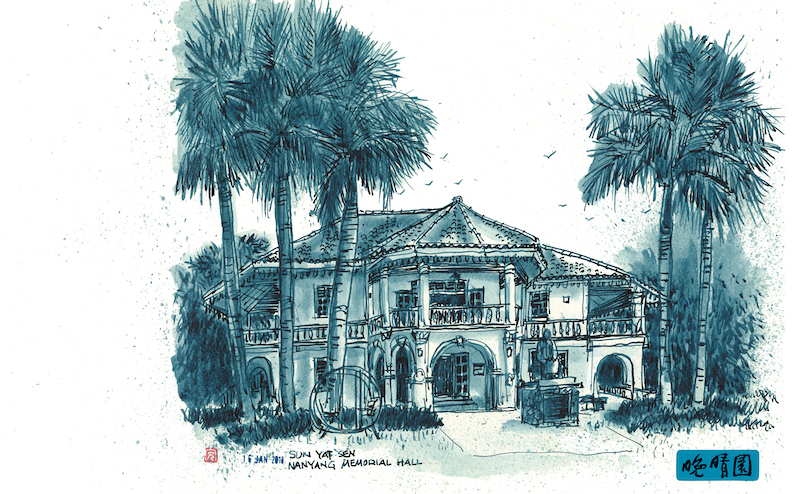 Sun Yat Sen Nanyang Memorial Hall
Sun Yat Sen Nanyang Memorial Hall
Gazette year: 1994
Built in the 1900s, this villa (known as Wan Qing Yuan in Mandarin) served as the headquarters of Dr Sun Yat Sen’s party at one point in time. He established the Singapore branch of the Tongmenghui (Chinese Revolutionary Alliance) in 1906 and Wan Qing Yuan became his headquarters in Nanyang for the propagation of his revolutionary ideas and the coordination of revolutionary activities in the region. A total of three uprisings to overthrow the Manchu Government were conceived at the villa. Today, the building is home to Sun Yat Sen Nanyang Memorial Hall, a heritage institution managed by the National Heritage Board.
Sketches by Steven Seow:
Gazette year: 1998
The Central Fire Station was completed in 1909, and at that time, it was a modern fire station equipped with the latest motorised fire engines. The building also provided accommodation for firefighters and their families. One striking feature of the building is its red and white façade, a distinctive characteristic of what is commonly known as “blood and bandage” architecture, a style popularised during the Edwardian era (1901-1910). The Central Fire Station still functions as an operational fire station today and serves the Central Business District and Chinatown. It also houses the Civil Defence Heritage Gallery which showcases the history of local fire-fighting service.
Gazette year: 1998
Completed in 1905 and built by well-known philanthropist, Sir Manasseh Meyer, Chesed-El Synagogue bears witnessto Singapore’s development since its early beginnings and serves as a memorial to Mr Meyer himself. The synagogue was designed by R.A.J. Bidwell of renowned firm Swan & Maclaren, and its high ceiling and numerous windows madeit suitable for Singapore’s tropical weather. The name Chesed-El means “Bountiful Mercy and Goodness of God” in Hebrew. Besides holding religious ceremonies under its roof, the synagogue also serves as a space where the local Jewish community gathers during Jewish festivals. Today, the Jewish Welfare Board manages both Chesed-El Synagogue and Maghain Aboth Synagogue.
Gazette Year: 1992
Initially built as a court house, this building in Empress Place was constructed by Indian convicts serving out their sentences in Singapore. Completed in 1867, the new building was used for a few years as a court before the court and its offices moved out in 1870. The building was then taken over by public offices such as the Treasury, Stamp Office, Auditor-General’s Office and Land Office. It was expanded several times over the years and continued to function as a Government office building even after Singapore gained its independence in 1965. Today, it is home to the Asian Civilisations Museum, which showcases the material cultures of China, Southeast Asia, South Asia and West Asia.
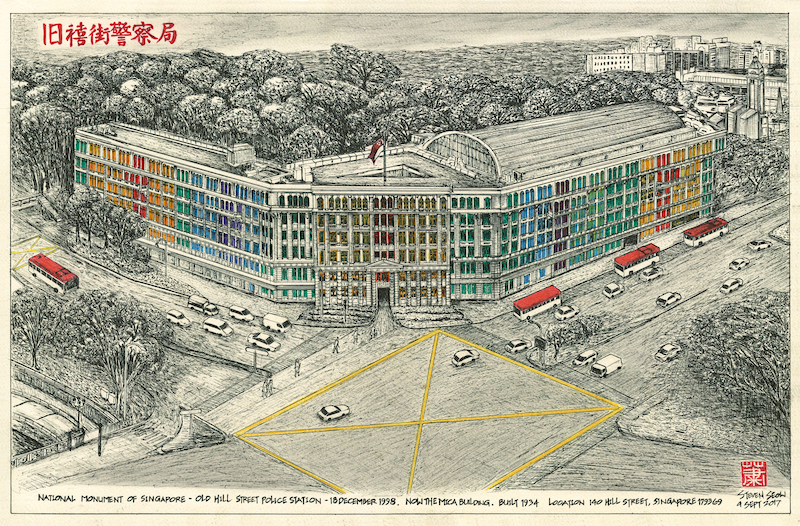 Former Hill Street Police Station
Former Hill Street Police Station
Gazette year: 1998
Built in 1934, this building was once the largest police station and barracks in Malaya, and built as part of a Malaya-wide improvement and development effort of the police. Designed by the Public Works Department, the imposing six-storey building is made of reinforced concrete. One prominent characteristic of the building is its large number of windows amounting to more than 900. During Japanese Occupation, the invading military forces seized control of the building and prisoners were held and interrogated within its premises. Today, the building with the bright multi-coloured windows houses the Ministry of Culture, Community and Youth, and the Ministry of Communications and Information.
Gazette year: 2015
Officially opened in 1975, Jurong Town Hall serves as a fitting reminder of Singapore’s rapid economic growth during its period of industrial development in the 1960s and 1970s. Located in the Jurong Industrial Estate area, it was built by Jurong Town Corporation (JTC) as its headquarters and designed by Malayan architects. The building’s futuristic architecture is a unique expression of the modern architectural style, and its modular form and use of reinforced concrete emphasise its industrial character. In 2000, JTC relocated out of Jurong Town Hall, and today, the building houses trade associations and offices of the Singapore Chinese Chamber of Commerce and Industry.
Gazette year: 2003
Completed in 1949, MacDonald House was named after Malcom John MacDonald, then Commissioner-General of Southeast Asia, and built to house the new branch office of Hongkong and Shanghai Banking Corporation (HSBC). At the time of its completion, the utilitarian and modernist building was the only office building in Southeast Asia to be fully air-conditioned and to allow individual temperature control in every room. During Konfrontasi in 1965, the building was the target of a bomb attack by terrorists which killed three civilians and injured several others. HSBC sold the building in 2003 and since 2005, Citibank has occupied the building and used it as its flagship branch in Singapore.
Sketches by Tony Chua:
Gazette year: 1992
This building once housed the highest court in Singapore, the Supreme Court, and is sited next to the former City Hall. Completed in 1939, the former Supreme Court is the last grand Neoclassical building built during the colonial era. The building stands on the site of a renowned hotel, Hotelde l’Europe, which closed in 1932. The colonial Government acquired the site, demolished the hotel and built the then-new Supreme Court. Designed in the Neoclassical style by Frank Ward, Chief Architect of the Public Works Department at that time, it functioned as the Supreme Court until 2005. Today, the former Supreme Court and the former City Hall house National Gallery Singapore.
Gazette year: 1973
The former Telok Ayer Market started as a fresh food market serving residents staying in the town area. It is the third market to be known as “Telok Ayer Market”. The market was constructed in 1894 on reclaimed land at Collyer Quay. Designed by the municipal engineer, James MacRitchie, it was built using Victorian cast-iron elements prefabricated in Europe. The market’s most prominent feature is its clock tower with four clock faces. Topped by a wind vane, the tower is beautifully decorated and shaped like a pavilion. Today, the former Telok Ayer Market, more well-known as Lau Pa Sat, serves as a popular lunch venue for office workers in the Central Business District.
Gazette year: 1974
The former Nagore Dargah was built as a shrine dedicated to a Sufi holy man, Shahul Hamid, and the actual shrine is located in a town called Nagore in Tamil Nadu. Initially named as Shahul Hamid Dargah, it was later renamed Nagore Dargah. Located in the historic district of Telok Ayer, its devotees include Chulias who hailed from Southern India. Similar to memorial shrines in Nagore and Penang, the former Nagore Dargah features a front façade that is most striking for its two square minaret-like towers extending beyond the building’s flat roof. Today, the former Nagore Dargah houses the Nagore Dargah Indian-Muslim Heritage Centre.
 Prinsep Street Presbyterian Church
Prinsep Street Presbyterian Church
Gazette year: 2000
Completed in the 1930s, Prinsep Street Presbyterian Church serves as a reminder of the contributions of Protestant missionaries in early Singapore. The church hadits roots in Reverend Benjamin P. Keasberry’s missionary work with the Malays at the first Mission Chapel ground (junction of Bras Basah Road and North Bridge Road). Later, he continued his Malay mission work at Prinsep Street. Over the years, the building has served the Straits Chinese (Malay-speaking and English-speaking congregations) and Chinese Christians, before eventually accepting all Presbyterians regardless of ethnicity, as Prinsep Street Presbyterian Church. Today, the red-brick building continues to function as the spiritual sanctuary of an active Presbyterian congregation.
Gazette year: 1978
Dedicated to St George and initially built to serve the garrison in Tanglin, St George’s Church was built in the 1910s. The church stands as witness to the area’s history during colonial times when Tanglin Barracks was the General Headquarters of the British Far East Land Forces. When the British withdrew from Singapore in 1971, the church became a civilian church before becoming a parish church in late 1973. Some of the key features of the building include its large arches and high windows which allow light in and facilitate air flow on either side of its nave. Today, the church serves an international Anglican community.
Gazette year: 1996
Yueh Hai Ching Temple is believed to be the first Mazu temple founded by the Teochews in Singapore and serves as a reminder of the contributions of Teochew pioneers who arrived after the British. Under the management of Ngee Ann Kongsi since 1845, it was built in the 1850s and functioned as a community hub for Teochew immigrants during the early colonial period. One distinctive feature of the temple has to be the spectacular three-dimensional sculptures on the roof depicting scenes of towns in China, as well as mythical flora and fauna that represent longevity, posterity and strength. Today, the Taoist temple houses two deities, Mazu, Goddess of the Seas, and Xuan Tian Shang Di, the ancestral deity of the Teochews, and continues to be a popular place of worship for the local Chinese community.


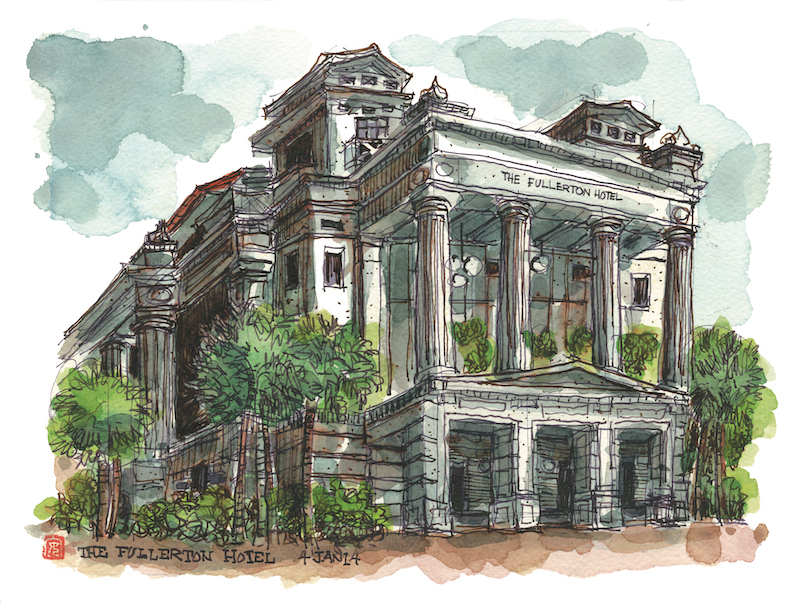
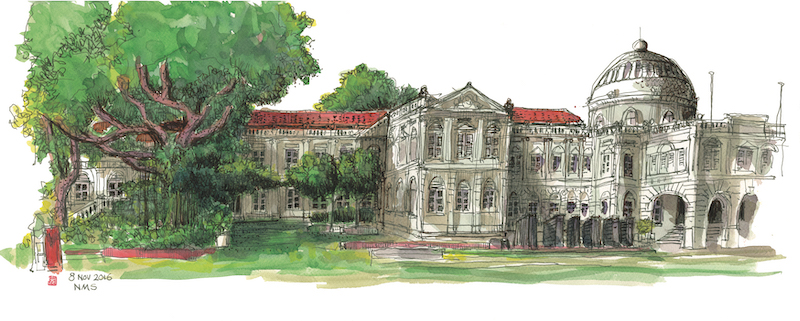

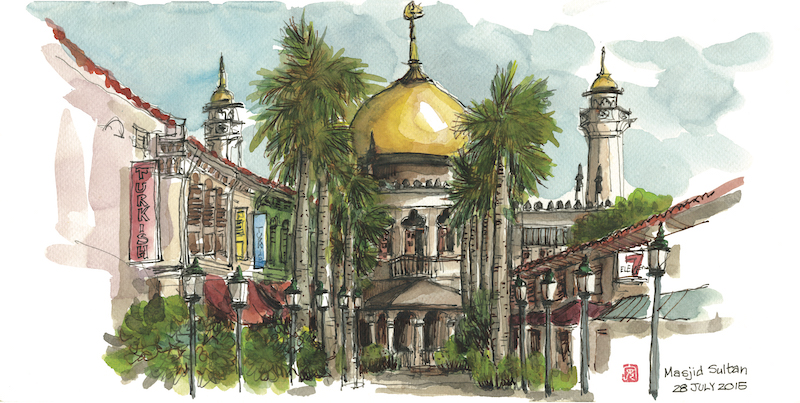
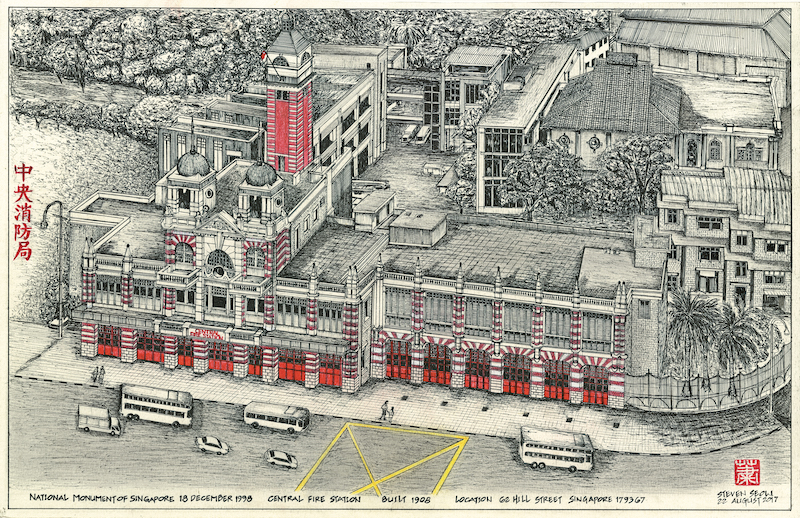

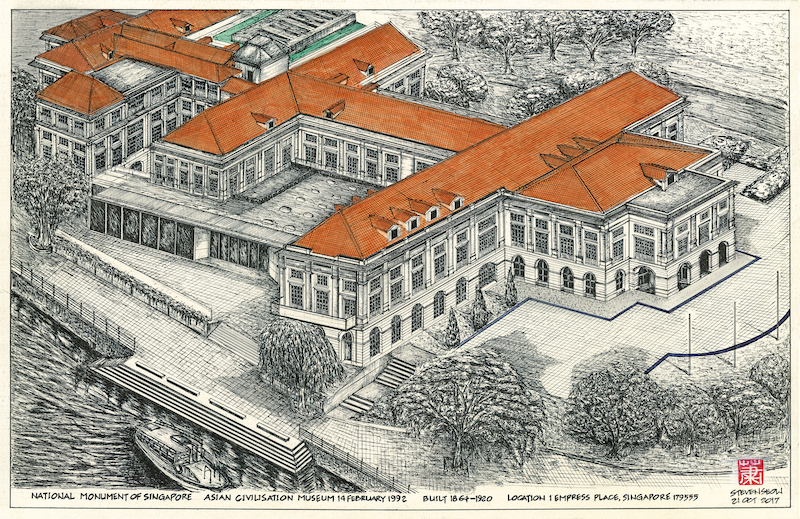
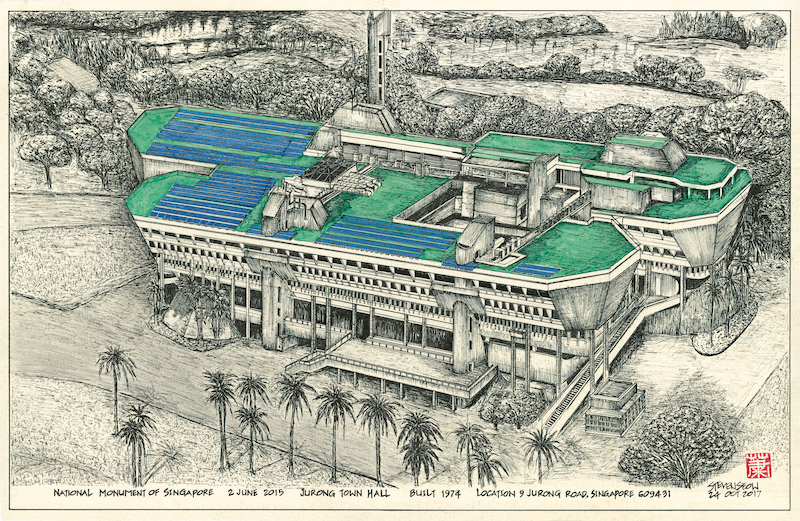
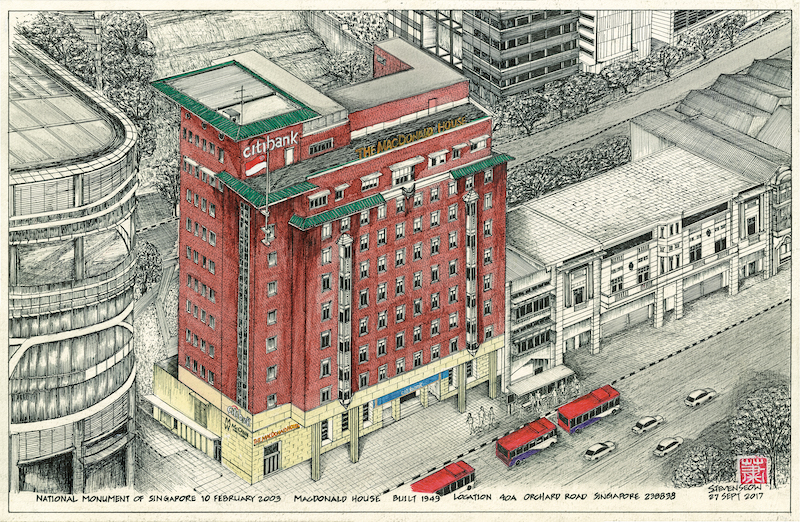
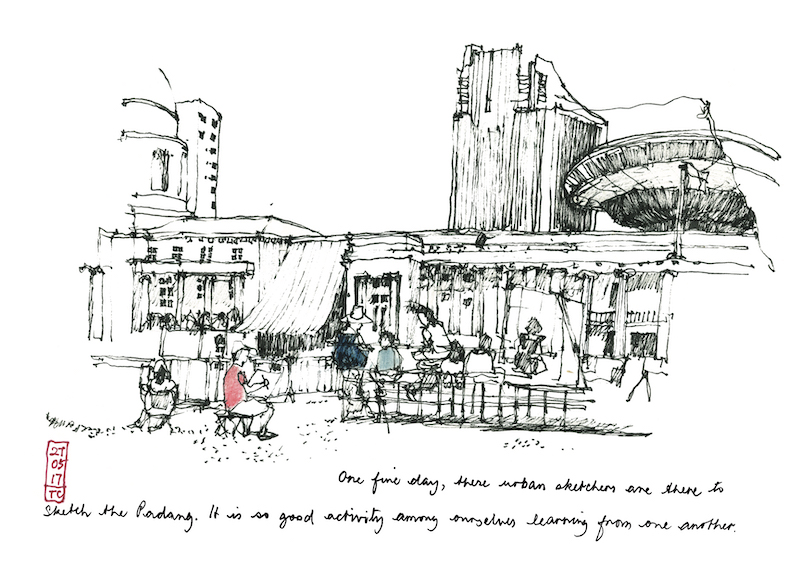
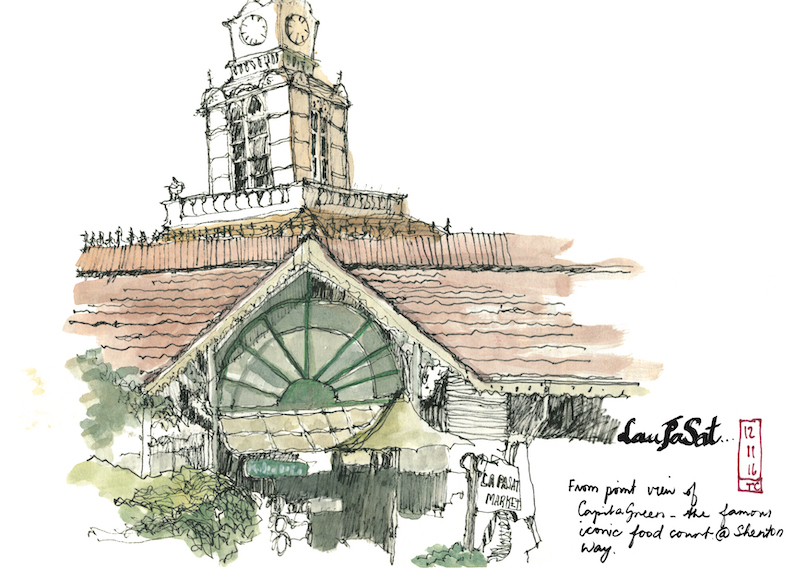
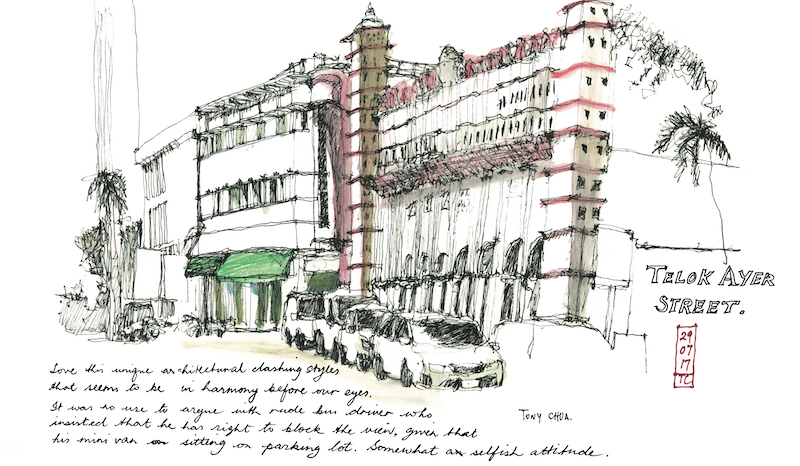


0 Comments